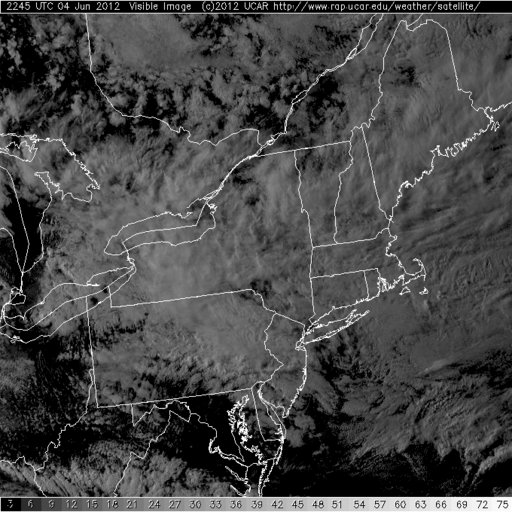
Adventures in Astronomy: The great Venus transit of 2012
In 2004, I was excited to have seen and recorded the Venus transit from Manchester, NH. I was a bit disappointed in my results and hoped to improve them in 2012. The acquisition of some digital SLR cameras, an HD webcam, and several new telescopes with solar filter made me optimistic. As the fateful day approached, the weather in NH deteriorated to the point that it looked like there would be 0% chance for clear skies. So, I began to look at all the possible scenarios. One scenario had me driving as far south as Washington DC but the night before the event demonstrated that this was not going to work as they were going to be cloudy as well. The next scenario had me driving as far west as western NY. That looked promising but with the transit starting at 6PM, I could afford to wait to the morning of 5 June to make a decision.

The visual satellite image at 6:45 PM on the 4th of June did not look promising
On that morning, I began to look at all the satellite imagery and predictions on the clear sky clocks in New York, New Jersey, and Vermont. Plattsburgh, NY and Burlington, VT caught my eye. They showed clear skies between 1700 and 2000 hours! The satellite images tended to support this as the clouds were moving towards the southwest with skies clearing north of the US-Canadian border. I figured that if things did not pan out there and if I arrived early enough, I might be able to go into upstate NY looking for clear skies. I was committed to this direction.
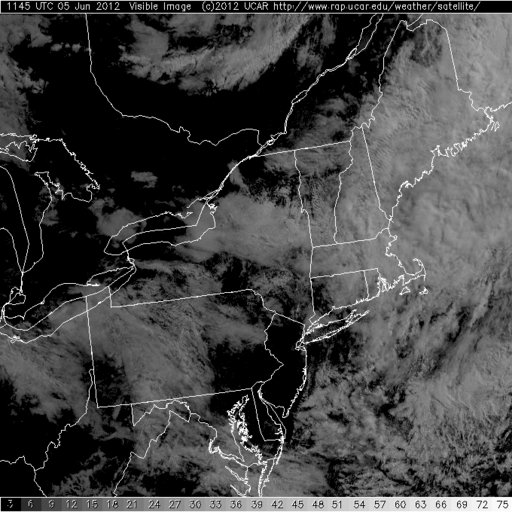
The visual satellite image at 7:45 AM on the 5th of June. The clouds were moving from northeast to southwest.
As we passed from NH into VT, the skies began to show promise. A few patches of blue appeared and the sun came out for a few seconds. By the time we approached Burlington, there was a nice clear blue sky towards the west.
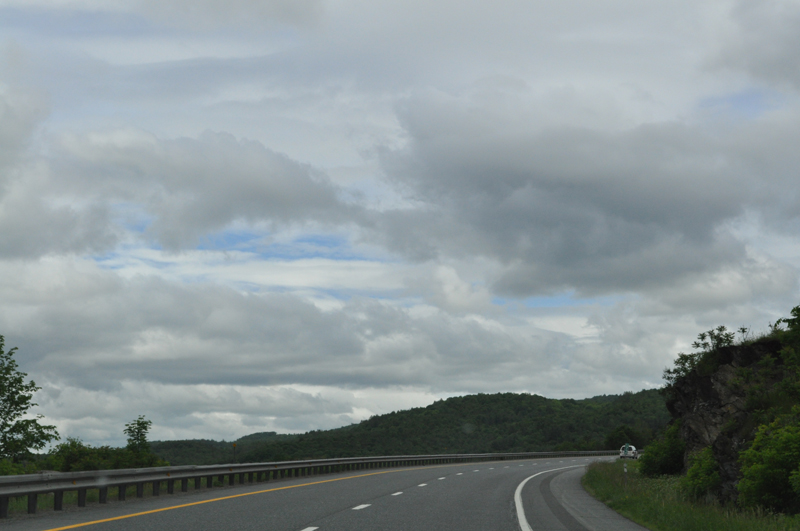
Are those patches of blue I am seeing as we drive into Vermont?
I next decided to go up route 2 into the island chain in the middle of the lake. The wind off of the water scrubbed my first observing site at a state park along the lake. Skies were better but it was not that clear either, so I decided to drive up and into upstate NY.
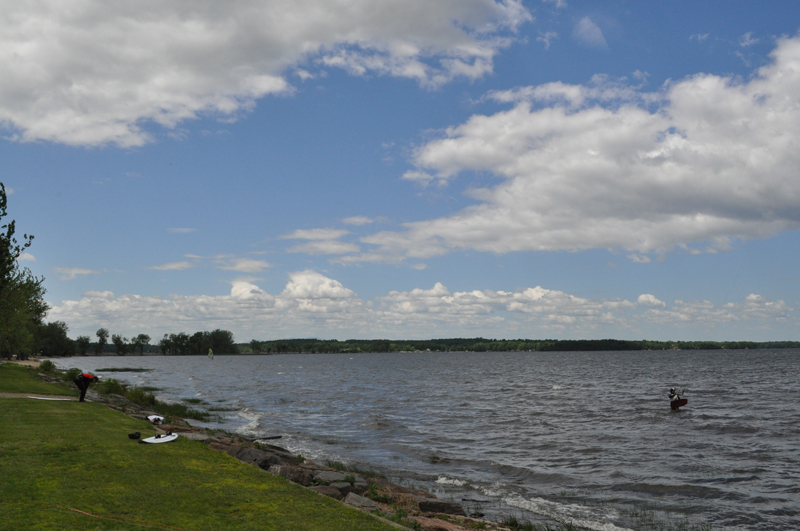
Lake Champlain near Burlington looking northwest. The skies looked more promising in that direction.
As we neared Rouses Point on the Canadian border, we stopped in a little shop in Alburg, Vermont. There, the owner said that there was an astronomy event just outside town to the south. Looking up the entire western sky to the zenith was clear. I was sold on this idea and we drove to the observatory of Joe Comeau. I contacted Al Navarro, who was two hours behind us with an image of the sky and he agreed with my decision and stated he would arrive shortly before first contact.
We arrived at Joe's observatory around 3:30 PM. He was very helpful and allowed us to setup in his field along with providing power for our equipment. We had no sooner unloaded the scopes from the vehicle when a rain shower passed overhead dumping some rain onto my equipment. There was a mad scramble to cover things up with coats and anything we could find. Joe provided us with a few tarps as well. This event made me begin to question the idea of coming to this location especially when I looked towards Rouses Point and saw blue sky! However, within fifteen minutes, the rain stopped and the sky cleared up again. The mad scramble to set up my equipment in time for the transit began.
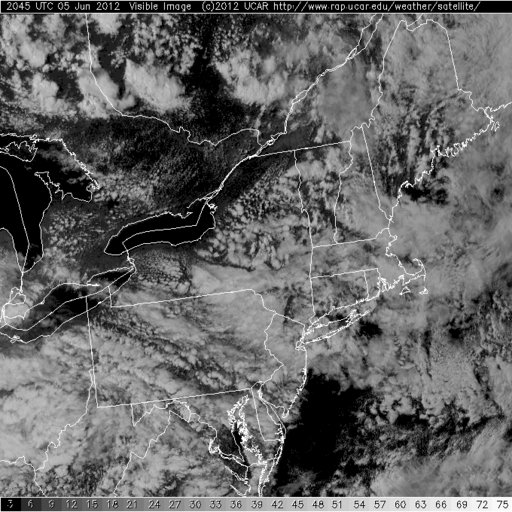
The visual satellite image at 4:45 PM on the 5th of June. The area of Alburg, near the nothwest corner of Vermont, was clear of major cloud cover. We made the right choice.
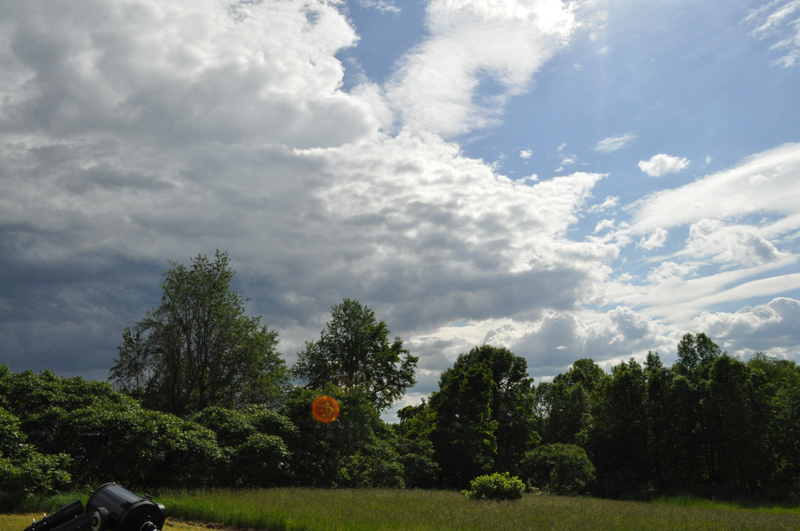
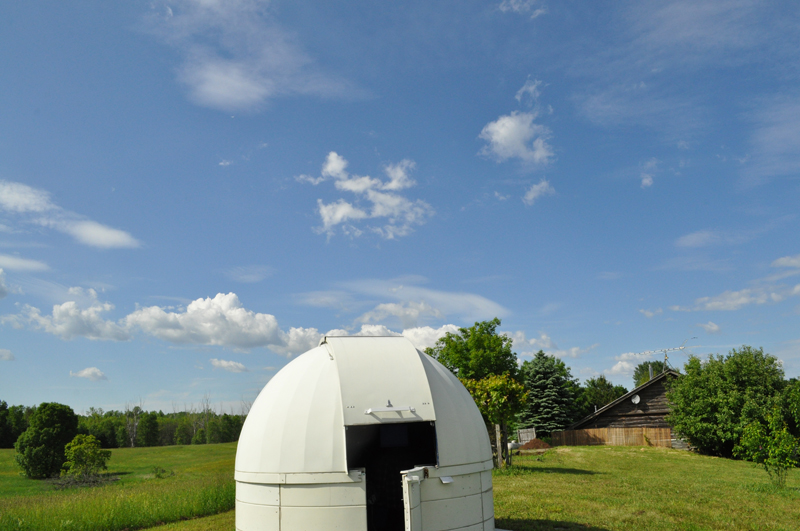
The shower had passed to the south and skies were clear to the north
With a few hours to prepare, and some much needed help from my wife, I was ready with plenty of time to spare. I had setup my LX-75 mount with a 6-inch reflector and a 120mm refractor piggybacked. The 6-inch would use a 3X barlow and Nikon D5000 Digital SLR. The 120mm F5 refractor would have an HD webcam mounted on it. In addition to this mount, I attached my Pentax KSX digital SLR to my 10" Schmitt-Cassegrain telescope with a 2X barlow. I felt I was ready.
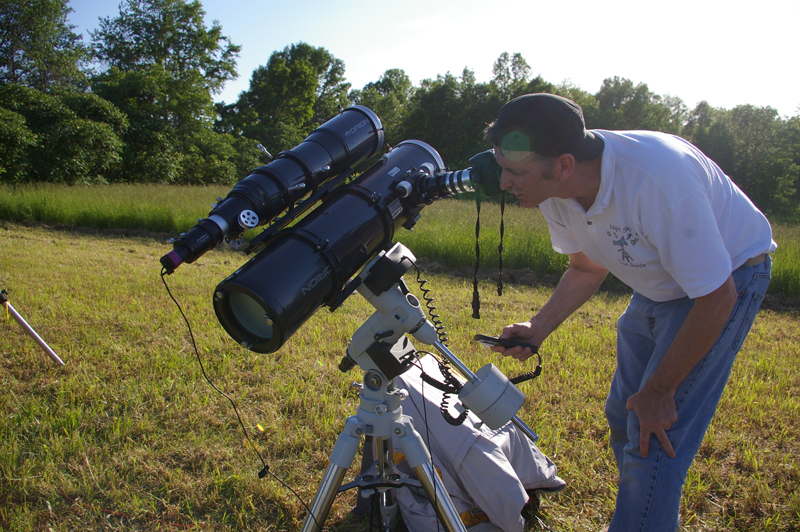
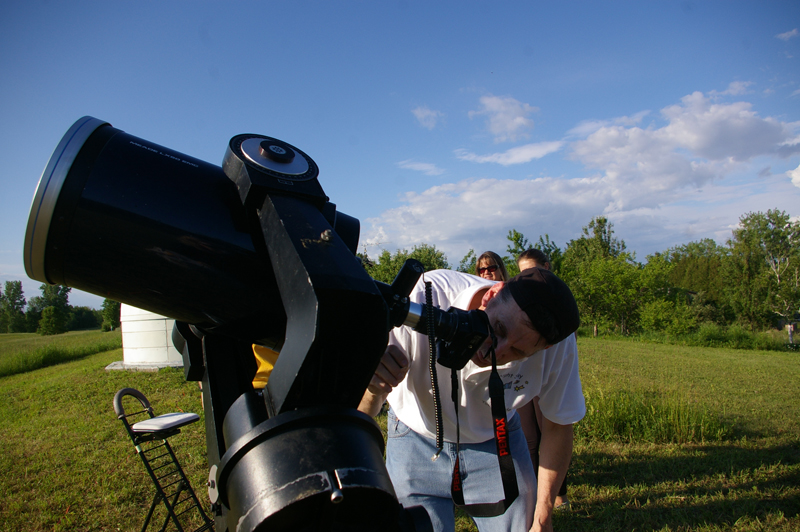
The six-inch/120mm telescope tandem (left) and the ten-inch SCT (right) used during the transit

The observing site for the transit
First contact caught everyone a bit by surprise. I noticed it looking through the 10". The video and photography was begun with much excitement. These next tweny minutes were the most critical as the planet Venus conducted its ingress. This sequence shows how the 6-inch with the 3X barlow (total focal length of 2250mm) recorded the event:
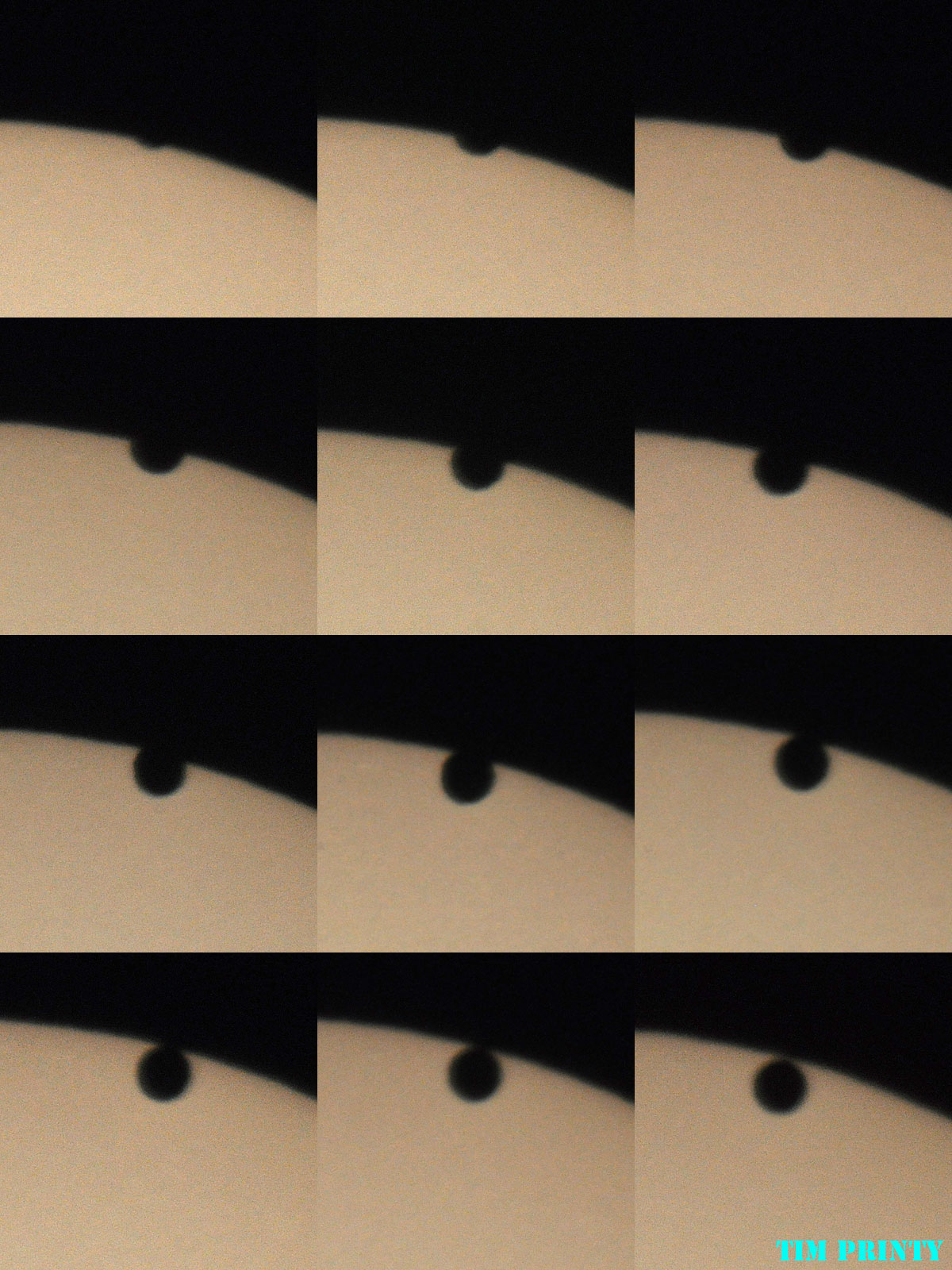
6-inch F5 reflector with 3X barlow using Nikon D5000 set at ISO 800 and exposure time of 1/800th of a second
Note how in the last two frames, the planet seems to have a connection that separates from the sun's limb. The 10-inch showed it in a similar manner:
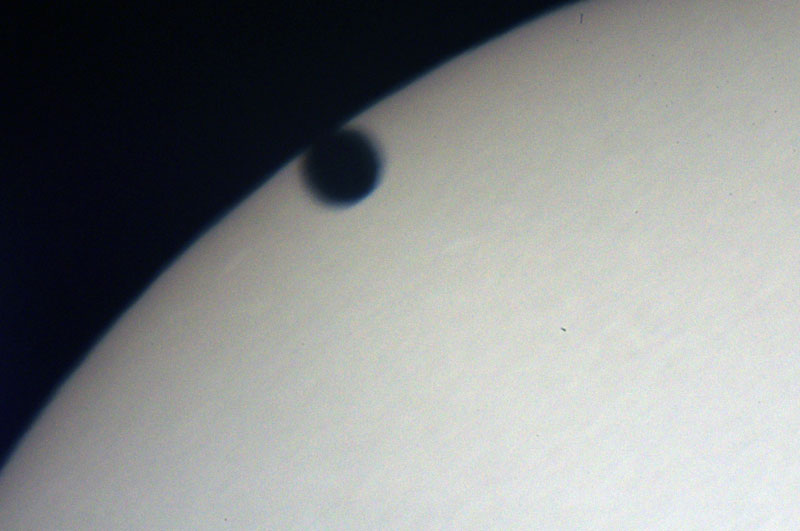
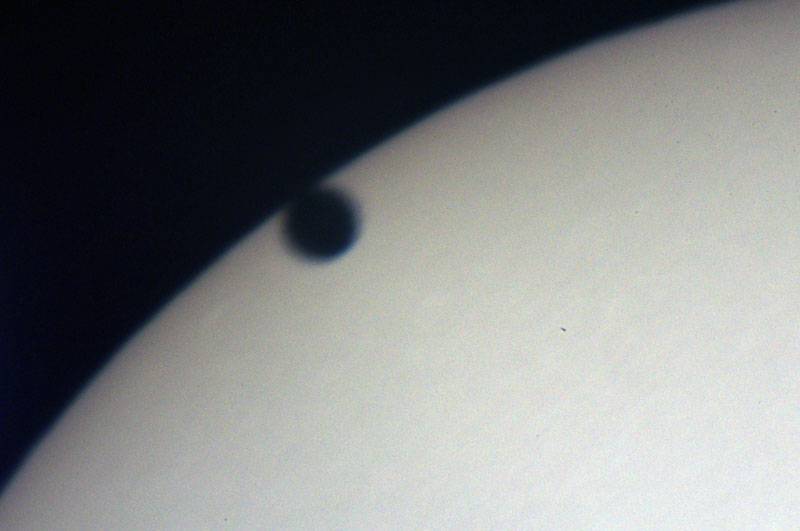
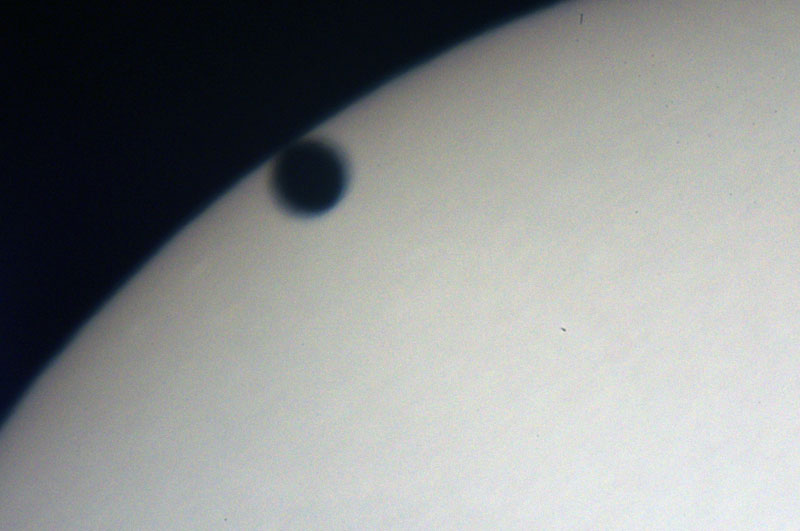
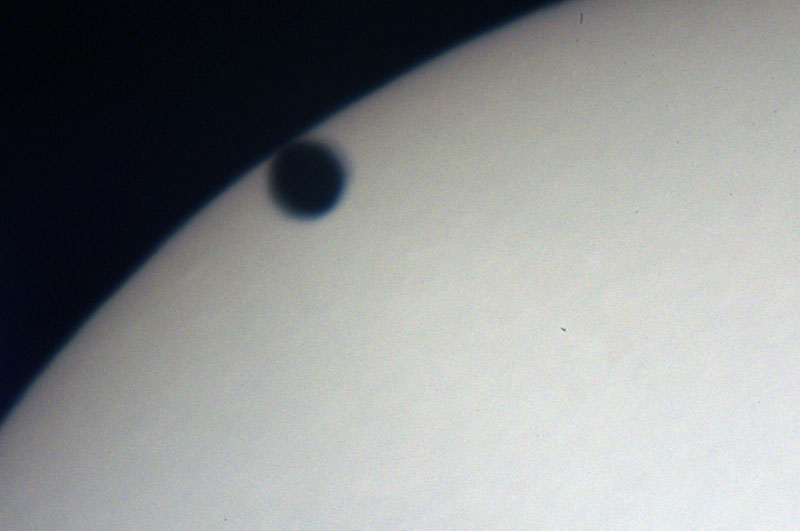
10-inch Meade LX50 Schmitt Cassegrain with a 2X barlow using a Pentax KSX camera set at ISO 800 and exposure time of 1/400th of a second.
The black drop sequence was the most interesting part of the event. The remainder was simply a black spot in front of the sun:
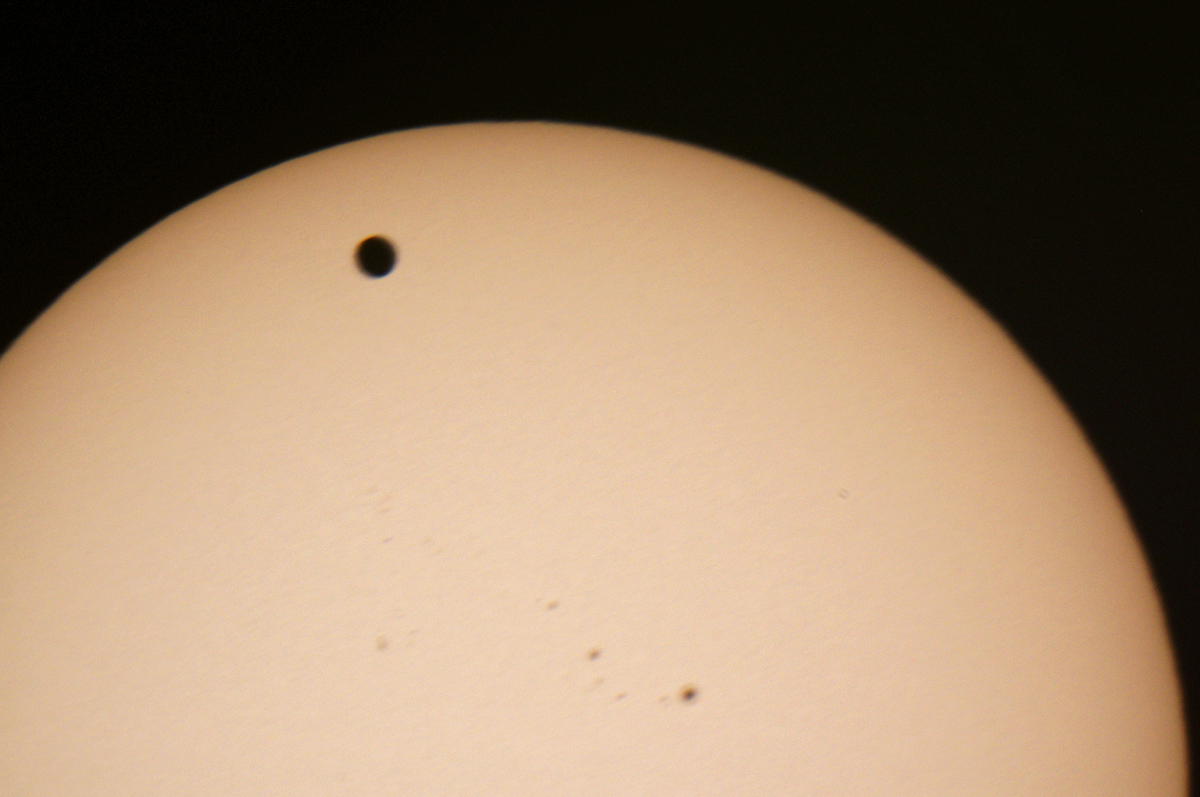
Venus and sun spots recorded using the 10-inch SCT at F-10 and a Pentax KSX camera set at ISO 800 with a 1/400th second exposure.
I accomplished my goal of recording the transit but I really feel that I could have done a better job. I can now look forward to the transit of Mercury on May 9th, 2016! The entire transit will be visible from the eastern United States so that might make for some interesting imagery. I just hope I don't have to wander up and down the eastern seaboard looking for clear skies!